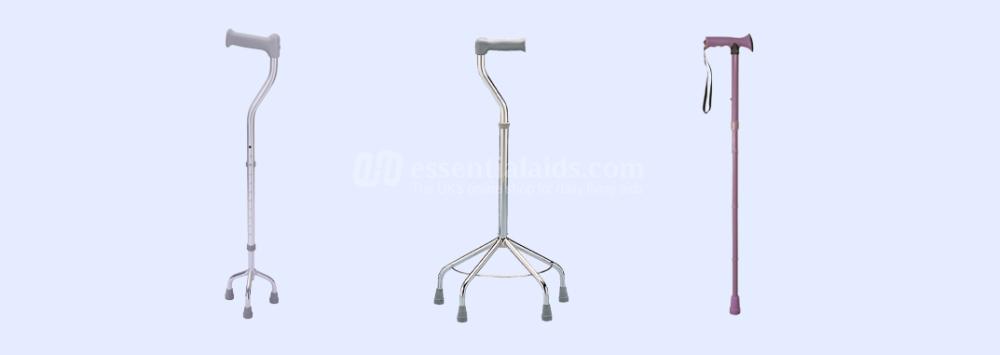
How a Wheeled Walker Benefits Your Mobility
Sally Madeley-Carr, OT22 May 2020
Using a mobile support frame can have significant practical benefits for people who struggle to walk unaided. Walking frames with wheels, often referred to as ‘rollators’, serve just this function, changing the daily lives of those who may have become immobile or dependent on others’ help to get from A to B.
Wheeled walkers are growing in popularity in the UK, partly due to improvements in design and also because the population is steadily aging. They offer a lot more support than walking sticks, although they are obviously larger and bring a new set of considerations.
Psychologically, retaining one’s ability to move around without the help of others is a significant component in good self-esteem. With tools like rollators readily available and economical to buy from website’s like essentialaids.com, it makes sense to consider this type of equipment.
For some elderly people there is a perceived stigma in having to use a mobility aid to get around. This however, is diminishing all the time, mainly through the popularity which the devices are gaining. Every year, more and more people see others using them on the streets, try them and instantly discover their benefits. Coming to the realisation that the positives far outway the negatives, their eyes are opened to the possibilities of regaining or enhancing their mobility.
Here’s a rundown of the most common reasons for using mobility walkers:
- Diminished strength
- Reduced stamina
- Recovering from injury
- Respiration or other breaking issues
- General ill health
- Pain caused by walking
- Fear of falling in the street
- Carrying excessive body weight
Wheeled walkers and other wheeled walking frames
Rollators are distinct from wheeled walking frames you might use indoors around the home. The latter have less robust, lightweight frames which are very easy to maneuvre. While some do have front wheels, they are generally too small to be useful outside the home, where curbs and other obstacles need to be negotiated.
The technique to use them is also different. With the indoor ‘zimmer’ style of frame, the user lifts or rolls it forward a short distance and sets it down, before making a step to catch up with it. This creates a situation where they edge forwards in the direction they wish to travel.
With a rollator, the action is more fluid. With wheels on the base of each leg, the device can roll smoothly in one direction, with a more natural ‘walking’ action required of the user.
Because of this dynamic process of movement, it’s important for rollators to have brakes. Most have the familiar bicycle-style cable mechanisms, with hand levers which engage as they are squeezed.
It’s important that the brakes are regularly checked to make sure they’re functional and safe. Maintenance of both the brakes and any other moving parts on the rollator should be undertaken. Debris picked up from the street can lodge between the brake pads and the wheel rims, and it needs to be regularly cleaned away.
The hand brake levers of rollator brakes tend to have wide, ergonomically sympathetic contours. In this way they differ from regular bicycle brakes, which have narrower levers which can dig-in to the hands. The wider design makes them easier to engage for people with diminished strength in the fingers, hands or forearms. Those with arthritis in these areas of the body may find this a particularly useful feature.
Some devices have an additional brake which engages when weight is placed on the seat. This is essentially a safety feature which lessens the possibility of the rollator unexpectedly moving when the user is sitting on it.
As with all mobility equipment, the likelihood is that it will be used by someone who is potentially vulnerable, so safety features like this are paramount in the design.
Along these lines, it is important to note that the vast majority of modern mobility walkers feature solid tyres, rather than those which require inflation. This reduces the chances of the rollator itself becoming immobile because of a puncture to one of the wheels.
Outdoor wheeled walkers tend to have larger wheels than their indoor counterparts. This helps them absorb bumps in the road and generally make for a smoother ride. They also have larger diameter tubing, typically of either steel or aluminium. These features make them more robust and equipped for longer journeys on pavements and up and down kerbs.
Steel versions are stronger and suitable for heavier individuals, while aluminium frames are lighter and easier to control. They are also better if you are likely to need to lift them up stairs or on and off buses, as many people do. Steel remains the best option for bariatric rollators which are required to bear more weight - we’ll touch on those further down.
Similarly to indoor walking frames, rollators are height adjustable. Usually, adjustments can be made by raising the height of the handles using a simple pin-clip mechanism.
Extending your walking range
If you’re only capable of walking for short distances and might need a break if you travel further, a four wheeled rollator might be ideal. Most models have seats situated between the handlebars. These provide a great resting point if you find yourself out of breath when you’re out and about.
Another benefit of this type of wheeled walker is the basket which is usually fitted immediately beneath the seat. This is accessed by flipping the seat upwards and is great for carrying shopping or other items.
Using a rollator can therefore make it viable for longer journeys by foot, maybe to the shops or elsewhere. Using one not only takes the strain out of walking, but also provides a portable resting point. Note that three-wheeled models do not usually encompass a seat - more on that further down.
Heavy duty ‘bariatric’ wheeled walkers
Bariatrics is the area of treatment and therapy reserved for obese people. Essential Aids does a number of these heavy-duty devices, selected for their strength and capacity to support those with excessive body mass.
Simple mobility for those in this category is an everyday problem which can lead to a downward spiral of decreasing exercise and further weight gain. With this in mind, for most people in this group it is important that physical movement is encouraged and facilitated by equipment, where possible.
While walking may still be difficult, in many cases specialised bariatric mobility walkers can make a big impact. As with standard rollators, they reduce the stress on the user’s body as they walk.
The ultra robust King Bariatric Rollator, which is suitable for people weighing up to 51 stone, is the strongest model in the Essential Aids range. It has an extra large seat, with a wide, curved backrest and a 24-inch measurement between the handles. It also has powerful dual brakes and wide tyres.
While it is heavier than standard models, it can still be folded up for transportation in the boot of a car or for storage. Bear in mind that the extra weight may make them unsuitable for lifting on and off public transport.
Advantages of lightweight mobility walkers
While the heavier rollators are stronger and great for heavier people, their lightweight counterparts are more maneuverable and relatively easy to direct and control. For elderly people who need more support than walking sticks offer, rollators like this often come to play a significant part in their daily lives.
Usually made from aluminium rather than steel, they are both light in weight and generally resistant to corrosion. Available with either four or three wheels and in a range of colours, these walking aids are ever more popular in the UK.
The three wheeled models tend to be the easiest to control and are generally narrower. This can make them suitable for indoor use as well as outside. Some come with a bag or basket attachment which fits between the handles. Almost all three wheelers fold up to a relatively small size, making them super easy to transport or store.
By comparison to four wheeled models, those with three wheels are slightly less stable, and do not feature a seat. The seat which is built-in to four wheelers makes these models an attractive option for those who might need to sit down midway through their journey, but the three wheelers are better if you’re going to need to squeeze through tighter hallways.
Both types are height adjustable, so you should be able to find one to suit you.
Psychological hurdles
It is true that some people find it difficult to overcome the idea of using a visible walking aid to get around. Elderly people in particular have historically been resistant to it.
However, as these devices become more widely seen on the streets, the perceived stigma is reducing all the time. A fundamental building block for many people’s identity and even their self esteem is their sense of independence.
If walking sticks aren’t enough and a simple mobility walker can help them get to and from the shops, or round to see a relative or friend, many are starting to see that the benefits far outway the negatives. Essential Aids has a broad range of high quality rollators made by established manufacturers.

Sally Madeley-Carr, OT
Sally qualified as an Occupational Therapist in 1996 and is a well-respected professional in the field of rehabilitation equipment and living aids. She has worked in private practice and within the NHS, developing a broad experience with adults and children. Click here for Sally's registration with the Health and Care Professions Council. The HCPC regulates health, psychological and social work professionals in the UK.